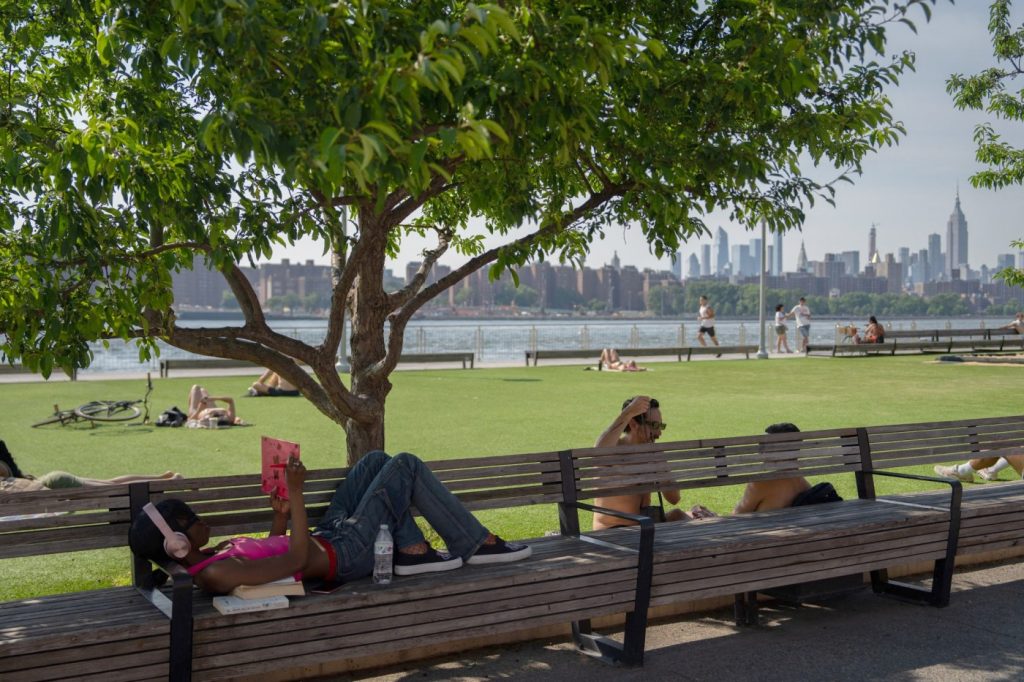PHILADELPHIA — During hot weather — like the wave of 90-plus-degree days that Philly will experience this week — most of the public’s attention is focused on skyrocketing outdoor temperatures that can cause serious medical complications such as heat stroke.
But for many people, especially those who lack access to air-conditioning, temperatures inside can become dangerous, as well, said Leah Schinasi, an assistant professor of environmental and occupational health at Drexel University.
In a recently published article reviewing the research on indoor overheating, Schinasi and other Drexel researchers noted that many vulnerable people, including the very old and young, spend most of their time indoors — but may not be able to adequately cool their houses in a heat wave.
Related Articles
Bay Area to see moderate fire danger concerns this weekend
El Niño is dead. Here’s what to expect in the coming months
Power demand expected to double by 2040 thanks to AI and EVs, PG&E’s CEO says
Can you drive up to 9,945 feet? Yosemite’s famed high country Tioga Road just reopened
Quick bake passes over Bay Area, as inland temperatures threaten 100
“It can actually get hotter indoors than outside, and this is a really important environmental justice issue,” Schinasi said. “A lot of people who are lower-income don’t have access to an air-conditioning system, and if they do, many aren’t able to afford the energy costs associated with using them.”
That can lead to dangerously high temperatures inside, which can significantly impact a person’s health, the study authors wrote in the journal Heliyon. Overheating indoors can lead to heart and respiratory issues, a higher risk of blood clots, and impaired kidney function, among other issues.
Extreme heat causes more deaths on average than any other extreme weather event in the United States, the researchers noted, highlighting a Centers for Disease Control and Prevention report.
“It’s important to stress that heat is a hazard to people’s health. Historically, it hasn’t been recognized as an environmental hazard,” Schinasi said.
The dangers of high indoor temperatures have been under-researched, she added, saying it’s crucial for public health officials to consider the needs of people who can’t shelter in an air-conditioned house during a heat wave.
How to address city ‘heat islands’
During heat waves, people can close blinds to block some radiant heat, stay hydrated, wear light clothing, and take showers to cool down. Some people will need to find cool locations beyond their house, like the cooling centers that Philadelphia health officials open during heat emergencies.
A person takes a nap next to a fountain as people try to stay cool in midtown Manhattan as much of the Northeast brace for a heat wave on June 18, 2024 in New York City. (Photo by Spencer Platt/Getty Images)
People should also consider checking on neighbors who are living alone and may not have adequate air-conditioning. (The study noted that elderly people sometimes have difficulty perceiving how hot it is and might not realize they’re in danger of adverse health effects.)
And cities should take long-term steps to combat the “heat island” effect that makes it particularly difficult for urban residents to weather a heat wave.
Philadelphia neighborhoods without much shade from trees and older homes can be difficult to keep cool she said: “Think of those brick rowhouses, old housing stock that sits extremely close together, as analogous to an oven — they can get really, really hot. And the flat, dark roofs we see in certain parts of Philadelphia absorb rather than reflect radiant heat and can contribute to extremely high temperatures inside.”
People try to stay cool in midtown Manhattan as much of the Northeast brace for a heat wave on June 18, 2024 in New York City. (Photo by Spencer Platt/Getty Images)
Planting trees or building structures that produce shade can lower sidewalk temperatures. Dark pavements can be painted in lighter colors so they reflect, not absorb, heat.
And, she said, officials should consider offering A/C systems to people without them as well as subsidizing cooling costs in the summer. Pennsylvania has a program that helps eligible residents get free conditioners; a similar New Jersey program helps residents cover energy bills.
“We need to think about ways to make residential environments safer,” Schinasi said. “People who lack resources and social supports are going to be the people who bear the burden in a heat wave.”
©2024 The Philadelphia Inquirer, LLC. Visit at inquirer.com. Distributed by Tribune Content Agency, LLC.


